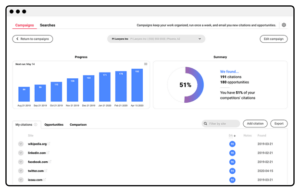Boost Your Business Online Visibility With Local SEO
In today’s digital age, local businesses can’t afford to ignore search engine optimization (SEO). A vast 46% of Google searches are locally-oriented, making it imperative for businesses to rank highly on local search results. When you consider local SEO as a strategy, you’re not just boosting your visibility; you’re connecting with potential customers in your vicinity who are ready to patronize your business.
In this article, we will go through a detailed guide to local SEO, consisting of essential tips and a comprehensive list of tools that can help you optimize your local SEO strategy. By the end of the guide, you will have a robust understanding of how to make your business stand out in local search results, thereby reaching potential customers who are ready to engage with your products or services.
Understanding Local SEO
At its core, local SEO revolves around optimizing a business’s online presence for local searches. This optimization process is particularly vital for businesses with physical locations or those that offer localized services.
Local SEO involves implementing strategies and techniques to improve a business’s visibility in search engines like Google when users make local searches. These techniques hinge on various factors, like local content, social media profiles, links, and citations.
With local SEO, businesses can position their products and services effectively for local prospects and customers searching for them online.
Local SEO Strategy: Essential Tips
Here are twelve essential tips to incorporate into your local SEO strategy:
1. Leverage Google My Business
Google My Business has become a crucial factor in local search visibility. Since Google generously promotes its own verified and authenticated content, Google My Business is a perfect tool to get your business in front of Google’s eyes.
To ensure you’re optimized for Google My Business, you should:
- Create and verify a Google My Business page.
- Utilize Google Posts within your account.
- Encourage your customers to share reviews online.
- Respond authentically to reviews, specifying location.

2. Stay Active on Social Media and Post Regularly on Google My Business
Google now considers content shared on social media more important than ever before. Thus, once you’ve created a stellar Google My Business page, share it on social media to align your social and search strategies.
3. Ensure Consistency of Name, Address, and Phone Number Online
Your Name, Address, and Phone number (NAP) should be consistent across all online platforms. This consistency makes it easier for both people and search engines to find you.

4. Optimize Online Directories and Citations
Ensure that your business information is consistent and complete across various online directories and data aggregators. Discrepancies like misspelling, abbreviations, lack of suite numbers, or incorrect phone numbers can be problematic.
5. Conduct a Local SEO Audit
A local SEO audit helps you understand where your website stands and what you need to work on to achieve your goals. It may include a Google My Business Audit, Google Search Console Audit, On-Page SEO Audit, Citation Audit, Competitor Analysis, and Website Audit.
6. Enhance Your Internal Linking Structure
Improving your internal linking structure can boost your SEO rankings by supporting website navigation, assisting with information architecture and website hierarchy, and distributing page authority and ranking power among pages.
7. Optimize URL, Title Tags, Headers, Meta Description, and Content
Every time you create a piece of content, you need to optimize the content for search engines by using high-volume keywords in the URL, title, header, meta description, and body.
8. Include Location Pages on Your Website
If you have more than one physical location, create location pages. These pages should provide readers with your name, address, phone number, store hours, unique store descriptions, parking/transit information, promotions, and testimonials from happy customers.
9. Produce Local Content
Create content that is locally-oriented, such as promoting local industry gatherings, news, employees, and other educational content on your blog.
10. Ensure Your Website is Mobile-Friendly
Local and mobile search go hand in hand, as a significant number of local searches are performed on mobile devices. Ensure your website is mobile-friendly to provide a seamless experience for users.
11. Acquire Inbound Links with Relevance and Authority
Inbound links are powerful tools to boost your local SEO. You can get inbound links by starting with your network, sponsoring a webinar or meetup, hosting a community event, or featuring in the local media as an industry authority.
12. Engage in Your Local Community
Engaging in your local community can earn you digital PR. Partnering with a non-profit organization on a campaign or appearing in the local media as an industry authority are ways to earn press, brand awareness, and inbound links.
Local SEO Tools
Leveraging the right set of tools can turbocharge your local SEO efforts. Here are six local SEO tools that can help you optimize your local SEO strategy:
- Whitespark
- Screaming Frog
- Moz Local
- Ahrefs
- Buzzstream
- BrightLocal

Elevate Your Business Visibility with Local SEO
Local SEO is a crucial part of any SEO strategy for local businesses. Implementing an effective local SEO strategy can help your audience find you when they search online, especially if you have a storefront or service area.
At Chili, we specialize in making your local SEO visible. With our expertise, we can help you optimize your online presence, increase your visibility, and connect with your local audience. .


Join the discussion - 0 Comment